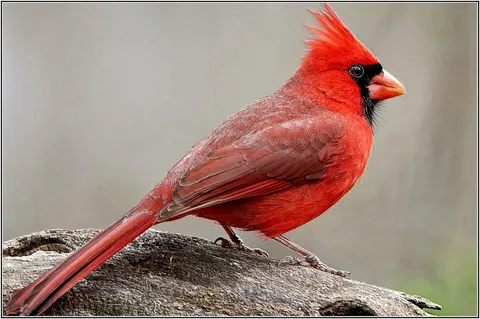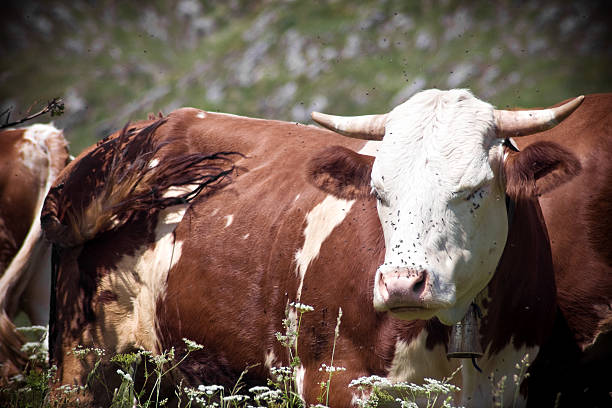What Sound Does a Cardinal Make? Discover the Beautiful Calls of This Bright Bird
Table of Contents
Introduction
Have you ever heard a cardinal sing? Their bright, cheerful songs are some of the most recognizable sounds in nature. But what exactly are these sounds, and why do cardinals make them? Cardinals, like many birds, use their voices to communicate with each other. They sing, whistle, and call to express their feelings and needs, making their sounds an essential part of their daily lives.
Cardinals make a variety of sounds, from their signature “cheer, cheer, cheer” call to sharp warning noises. These sounds help them claim territory, attract mates, and stay safe from predators. Each sound has a special meaning, and understanding these calls can help us learn more about these beautiful birds and their behavior. If you’ve ever wondered what sound a cardinal makes and why, you’re in the right place!
In this post, we’ll dive into the different sounds cardinals make and what they mean. From their bright morning calls to their warning signals, we’ll explore the reasons behind each sound. By the end, you’ll have a deeper appreciation for the cardinal’s voice and its important role in their survival and social life.

What Sound Does a Cardinal Make? A Look at Their Unique Call
Cardinals are known for their bright red feathers and striking appearance, but one of their most distinctive features is the sound they make. When you hear the question, “What sound does a cardinal make?” the first answer that comes to mind is usually their loud, cheerful whistle. The cardinal’s call is often described as a series of “cheer, cheer, cheer” notes, which are easy to recognize. This whistle is not only a beautiful sound but also an important way for cardinals to communicate.
The male cardinal is especially vocal, using its whistle to announce its presence to other birds in the area. This call serves several purposes, such as marking its territory and attracting potential mates. The whistle is typically loud and clear, allowing the cardinal to be heard from a distance. It’s common to hear this sound early in the morning or late in the day when cardinals are most active.
In addition to the whistle, cardinals can also make other sounds, like sharp “chip” calls and trills. These are often used in different situations. For example, a sharp “chip” sound might be heard when a cardinal is alarmed or trying to warn other birds about a nearby predator. Trills, on the other hand, are often heard when the cardinal is excited or calling to its mate. These sounds add variety to the cardinal’s vocal range and help it communicate in different ways.
The “cheer, cheer, cheer” call is the most common sound you’ll hear from a cardinal, especially during the breeding season. Male cardinals use it to show off to females, trying to prove they are strong, healthy, and ready to mate. Females are often drawn to the loudest and clearest calls, which signal a healthy bird. This whistle is a way for the male to make a lasting impression, and it is heard by other cardinals as well, marking his territory.
In summary, the cardinal’s sound is a crucial part of its daily life. Whether they’re calling to attract a mate, warn of danger, or mark their territory, their cheerful whistle and variety of other sounds play an important role in the way they communicate. If you ever find yourself wondering, “What sound does a cardinal make?” you’ll know that it’s not just one sound, but a collection of beautiful calls that help them thrive in their environment.
Understanding the Whistle: What Sound Does a Cardinal Make?
When it comes to the question “What sound does a cardinal make?” the whistle is usually the first thing that comes to mind. The male cardinal’s most recognizable call is a loud, clear whistle, often described as “cheer, cheer, cheer.” This whistle is repeated several times in a row, making it easy for anyone to identify the cardinal’s presence. It is one of the most common sounds heard in the wild, especially in the early morning or late afternoon when cardinals are most active.
The primary purpose of this whistle is to attract a mate. During the breeding season, male cardinals use their whistling calls to let females know they are healthy and ready to mate. The louder and clearer the whistle, the more likely it is to catch the attention of a female. By repeating the whistle several times, the male is also trying to show off and prove his strength, making him a more appealing choice to females searching for a strong mate.
In addition to attracting females, this whistle is also an important territorial call. Male cardinals use the whistle to announce their territory to other males. By making their presence known, they are warning other males to stay away. This helps reduce conflicts and ensures that the cardinal can maintain control over its chosen area. It’s a way for cardinals to establish boundaries and keep other males from intruding.
What makes the cardinal’s whistle so effective is its loudness and clarity. It’s a sound that can carry over long distances, especially in quiet environments. If you’re standing in a forest or a quiet backyard, you might hear this whistle echoing through the trees. The whistle’s unique quality helps cardinals communicate in their environment, making it easier for them to find mates and defend their territory.
In conclusion, the cardinal’s whistle is not just a simple call; it plays an important role in the bird’s life. It helps male cardinals attract mates, defend their territory, and communicate with other cardinals. Understanding the whistle gives us a better appreciation for the complex way cardinals interact with each other. So, the next time you hear that distinctive “cheer, cheer, cheer,” you’ll know it’s much more than just a beautiful sound—it’s a vital part of the cardinal’s survival.

Why Do Cardinals Make a Cheerful Sound? Exploring Their Calls
When you hear a cheerful “cheer, cheer, cheer” sound in the woods, it’s likely a cardinal calling out. You might wonder, “Why do cardinals make such a cheerful sound?” The answer lies in the cardinal’s behavior and the purpose behind this distinct call. The cheerful sound is primarily used by male cardinals to attract a mate. During the breeding season, a male cardinal will sing out loudly and repeatedly to show off to females, signaling that he is healthy, strong, and ready to mate.
In addition to attracting a mate, the cheerful call helps male cardinals establish their territory. Cardinals are very territorial birds, and the cheerful sound serves as a warning to other males. By making their call loud and clear, male cardinals let other males know that they are in control of a specific area. This reduces the chance of fights and helps maintain peace between neighboring cardinals. It’s a way of saying, “This is my space, and I’m not going to let anyone take it.”
The cheerful sound also serves to communicate with other birds in the area. While cardinals use the call to mark their territory and attract mates, other birds might hear the sound and recognize the cardinal’s presence. This helps keep the environment organized, as different birds can understand who belongs where based on the calls they hear. The cheerful “cheer, cheer, cheer” is a reminder that a cardinal is nearby, and other birds are aware of its location.
One interesting aspect of the cardinal’s cheerful sound is how it changes depending on the time of day. In the early morning, male cardinals are especially vocal. They use their cheerful calls to announce the start of a new day and to communicate with other cardinals. This call is also an important part of their daily routine, helping them stay connected with the world around them.
In summary, cardinals make their cheerful sound for several reasons. They use it to attract mates, establish territory, and communicate with other birds. This call is an essential part of their survival and helps them maintain their place in the environment. Next time you hear a cardinal’s cheerful whistle, you’ll understand that it’s not just a pretty sound—it’s a purposeful call that helps cardinals thrive.
How to Identify the Sounds of a Cardinal
Identifying the sounds of a cardinal is easier than you might think once you know what to listen for. The cardinal’s most common sound is a clear, cheerful “cheer, cheer, cheer” call. This whistle is loud and repeated several times, often heard in the morning or evening when the birds are most active. If you hear this kind of bright, repetitive sound, chances are it’s a male cardinal calling out to attract a mate or announce its territory. It’s one of the most distinctive bird calls you can hear in wooded areas or suburban yards.
In addition to the “cheer, cheer, cheer” whistle, cardinals also make other sounds that are helpful for identification. For example, when a cardinal is feeling threatened or alarmed, it might emit a sharp “chip” sound. This quick, high-pitched noise serves as a warning to other birds nearby, alerting them to potential danger. If you hear a cardinal make this sound, it’s a sign that the bird is on alert or trying to warn others about a predator.
Another sound that can help you identify a cardinal is the trill. Cardinals make trilling sounds when they are excited or calling to a mate. These trills are often softer than the “cheer, cheer, cheer” whistle but still loud enough to be noticeable. Trills can vary in length and pitch, but they are often a sign of communication between cardinals. If you hear a series of rapid, high-pitched notes, it’s likely a cardinal signaling its presence or trying to engage with another bird.
You can also identify cardinals by their vocal patterns, as males tend to be more vocal than females. The male cardinal will often be the one singing the loud, repeated whistles during the breeding season, while females may make softer calls. The difference in their calls can help you distinguish between the two, especially when you hear the distinctive whistle followed by a series of trills or sharp “chip” sounds.
In conclusion, identifying the sounds of a cardinal is about paying attention to their distinctive calls. The “cheer, cheer, cheer” whistle is the most common, but cardinals also make sharp “chip” sounds and trills depending on the situation. By listening carefully, you can quickly learn to recognize the cardinal’s different calls and understand what they mean. Whether they’re warning of danger, attracting a mate, or simply communicating with others, each sound plays an important role in the cardinal’s life.

What Sound Does a Cardinal Make? A Guide to Their Songs and Calls
When it comes to understanding the question, “What sound does a cardinal make?” it’s important to recognize that cardinals are known for their beautiful and varied calls. The most common sound you will hear from a cardinal is its loud, clear whistle, often described as “cheer, cheer, cheer.” This whistle is repeated several times and is especially noticeable in the morning or evening. It’s a sound that quickly catches the attention of anyone nearby, making the cardinal’s presence known.
Male cardinals are particularly vocal, and this “cheer, cheer, cheer” whistle plays an important role in their lives. It’s used primarily to attract a mate during the breeding season. The louder and more distinct the whistle, the more likely it is to impress a female. In addition to attracting females, the whistle also helps male cardinals establish their territory. By calling loudly and repeatedly, the male signals to other cardinals that this area is already claimed.
Cardinals also make other sounds that help with communication. For example, when alarmed or sensing danger, they produce a sharp “chip” call. This high-pitched noise is quick and serves as a warning to other birds about nearby predators. It’s a sound that helps protect the bird and alert the rest of the flock to stay on guard. If you hear a cardinal make a sudden, short “chip,” it’s a sign that something has startled the bird.
Another call you might hear from a cardinal is the trill. This sound is softer than the “cheer, cheer, cheer” whistle and is often made when the cardinal is excited or communicating with its mate. The trill is a rapid series of notes that may vary in pitch. It’s often heard in social situations or when cardinals are interacting with one another. This call adds variety to the cardinal’s vocal range and helps express different emotions or intentions.
In conclusion, the cardinal’s call is much more than just a beautiful sound. It serves several important purposes, from attracting mates to warning of danger and marking territory. By listening closely to their “cheer, cheer, cheer,” “chip,” and trills, you can learn to identify and understand the different ways cardinals communicate. Whether they’re calling to a mate or alerting the forest to danger, their songs and calls are key to their survival and social interactions.
The Importance of Sound: Why Cardinals Sing
The sound of a cardinal’s call is more than just a pleasant tune; it serves a critical purpose in the bird’s life. When you hear a cardinal sing, it’s usually a male bird trying to attract a mate. During the breeding season, male cardinals sing loud and clear, hoping to impress a female. The “cheer, cheer, cheer” whistle that they make is often repeated several times, showcasing their strength and health. A strong and consistent song is a signal to females that the male is fit, making him a more attractive mate.
In addition to attracting mates, cardinals use their songs to defend their territory. Male cardinals are very territorial, and singing is a way for them to establish their space and keep other cardinals away. By singing loudly and frequently, a male cardinal is telling other males that this area is already claimed. This helps reduce physical confrontations and allows each bird to maintain control of its environment without the need for constant fights.
Cardinals also use their songs to communicate with other birds. The “chip” call, for example, is a sharp, quick sound that serves as a warning. When a cardinal senses danger, it will emit this alarm call to warn nearby birds. This helps the entire flock stay alert and avoid predators. The ability to communicate through sound helps cardinals stay safe and informed about their surroundings.
Another reason cardinals sing is to create bonds with other cardinals. The trill, which is a series of rapid, high-pitched notes, is often used by cardinals when interacting with their mates or other members of their species. This sound is softer than the whistle and can be a sign of excitement or affection. Through this vocalization, cardinals express social connections, further strengthening their relationships within their community.
In conclusion, the sounds that cardinals make are crucial for their survival. Their songs are used to attract mates, defend territories, communicate warnings, and build social bonds. Each call serves a specific function, helping cardinals navigate their world and thrive. The next time you hear a cardinal sing, remember that it’s not just a beautiful sound—it’s a vital tool for the bird’s life.

What Sound Does a Cardinal Make in Different Seasons?
Cardinals are known for their distinctive calls, but the sounds they make can change depending on the season. In the spring and summer, the most common sound you’ll hear is the bright, cheerful “cheer, cheer, cheer” call. During this time, male cardinals are busy attracting mates and establishing their territories. Their calls are loud, repetitive, and designed to impress females while also warning other males to stay away. The spring and summer are the most active times for cardinal vocalizations, as the birds are focused on reproduction and protecting their space.
As fall arrives and the breeding season ends, the intensity of the cardinal’s calls decreases. You will still hear some “cheer, cheer, cheer” sounds, but they are less frequent. During this time, cardinals are more focused on survival and foraging for food. While cardinals don’t completely stop vocalizing in the fall, their calls become quieter and more subdued. The mating urgency of the warmer months gives way to the need to prepare for colder weather.
When winter arrives, cardinals become quieter overall, but they still make sounds to communicate with each other. The sharp “chip” call is one of the most common sounds heard during winter. This call is used to warn other birds of potential threats, like predators or sudden changes in the environment. Cardinals may also make low, softer trills to communicate with their flock members. These calls are typically heard during the quiet hours of the day when the birds are foraging or moving between feeding areas.
Despite the seasonal changes in their vocalizations, cardinals do not stop singing altogether. Even in winter, male cardinals may still sing occasionally, especially during warmer days. This is likely a sign of territorial behavior or a way to stay connected to other cardinals. While the frequency of their calls decreases in winter, cardinals remain active in using sound to maintain their social connections and alert others to danger.
In conclusion, cardinals adjust the sounds they make based on the season. In the spring and summer, they are most vocal, using their calls to attract mates and defend their territory. As fall and winter arrive, the frequency and intensity of their calls decrease, but they continue to use sounds for communication and safety. Understanding how the cardinal’s vocalizations change with the seasons helps us appreciate how these birds adapt to different challenges throughout the year.
Cardinals and Their Calls: More Than Just a Whistle
When most people think of a cardinal’s call, they imagine the familiar “cheer, cheer, cheer” whistle. While this sound is certainly iconic, cardinals actually have a much wider range of vocalizations. Their calls are not just about making noise; they play crucial roles in the bird’s communication, survival, and social behavior. From attracting mates to warning others about danger, a cardinal’s calls serve many important purposes that go beyond just the cheerful whistle.
One of the most notable features of a cardinal’s vocal range is the “chip” call. This sharp, quick sound is made when a cardinal feels threatened or senses danger. Unlike the cheerful “cheer, cheer, cheer,” the “chip” call is a high-pitched, urgent noise that serves to alert other birds of potential predators. It is a protective call, often heard when a cardinal is on alert and trying to warn others in its vicinity. This call helps maintain safety within the bird’s environment and signals the presence of a threat.
In addition to alarm calls, cardinals also use trills in their vocal repertoire. Trills are rapid, repeated notes that can sound like a string of musical sounds. Cardinals make these trills to communicate with their mates or other members of their species. During courtship, males often use trills to demonstrate their fitness and attract females. These trills are softer and more melodic compared to the “cheer” and “chip” sounds, offering a different type of communication within the bird community.
Cardinals are also known for their ability to sing and communicate in various social settings. They can adjust their calls depending on the situation. For instance, when engaging with other cardinals, they might use a series of whistles or trills to signal their presence and establish bonds. These vocalizations are important not only for attracting mates but also for maintaining relationships with other birds. Cardinals use their sounds to express excitement, affection, and even frustration, highlighting the richness of their communication.
In conclusion, a cardinal’s calls are far more complex than just a simple whistle. From the “cheer, cheer, cheer” whistle that attracts mates to the sharp “chip” call used for warning, cardinals have developed a diverse range of sounds. These calls are vital for communication, socializing, and ensuring survival. Understanding that cardinals are more than just their famous whistle helps us appreciate how these beautiful birds use their voices in many different ways throughout their lives.

Exploring the Cheerful Sounds of a Cardinal’s Song
The cheerful sounds of a cardinal’s song are one of the reasons why this bird is so beloved. The most iconic sound that people associate with cardinals is their loud, clear whistle that repeats the phrase “cheer, cheer, cheer.” This joyful song is often heard in the early morning, and it stands out against the quiet background of nature. The male cardinal sings this call to announce his presence, especially during the breeding season, hoping to attract a mate with his powerful and consistent whistle.
The “cheer, cheer, cheer” call is not only cheerful but also serves a practical purpose. For male cardinals, it acts as both an invitation and a signal of their strength. A loud, clear whistle indicates that the male is healthy and strong, making him more appealing to female cardinals. By singing this song, he also marks his territory, warning other males that this area is already claimed. The cheerful sound is, therefore, both an advertisement and a declaration of ownership.
What makes the cardinal’s song even more fascinating is that it can vary in intensity. The call can be louder and more frequent during the spring and summer when the male is courting a female or defending his space. However, in quieter times, such as during the colder months or after the breeding season, the song may be less frequent but still serves as a way for the cardinal to stay connected to its environment and communicate with other birds in the area. Even though the cardinal’s cheerful song may seem simple, it adapts to different situations in the bird’s life.
Cardinals also produce other sounds alongside their cheerful whistle. For example, they may use a sharp “chip” call when they sense danger or when they need to alert others to a potential threat. This call contrasts sharply with the bright “cheer, cheer, cheer,” highlighting the versatility of the cardinal’s vocal abilities. While the cheerful song is the most recognizable sound, it is part of a larger communication system that allows cardinals to stay safe and connected to their environment.
In conclusion, the cheerful sounds of a cardinal’s song are more than just pretty noises. They play an essential role in the cardinal’s social life, helping to attract mates, establish territory, and communicate with others. The “cheer, cheer, cheer” call is a symbol of the bird’s strength and vitality, while its varied vocalizations add depth to its communication. Whether you’re enjoying a cardinal’s song on a quiet morning or hearing its call from afar, there’s no denying the joy it brings to the world.
What Sound Does a Cardinal Make to Attract a Mate?
When it comes to attracting a mate, male cardinals rely heavily on their distinctive calls. The primary sound they use to woo females is their bright and cheerful “cheer, cheer, cheer” whistle. This loud, clear whistle is repeated several times and is meant to catch the attention of females nearby. During the breeding season, the male cardinal sings this song with great enthusiasm to show off his presence and strength. The more consistent and louder the whistle, the more attractive he appears to a potential mate.
The purpose of the “cheer, cheer, cheer” call is not just to get attention—it also signals the male’s fitness and vitality. Female cardinals listen carefully to the strength of a male’s song. A powerful, persistent whistle indicates that the male is healthy and strong, qualities that are important for successful reproduction. By singing continuously, the male is essentially saying, “I am capable of taking care of a mate and the future family.” This makes the song a key factor in the female’s decision-making process.
Interestingly, the male cardinal’s song also helps him stand out from other males in the area. During the breeding season, many male cardinals are singing the same call, but each one will try to make his song louder and more impressive to outshine the others. By doing so, he shows that he is not only strong but also dominant in the area, which could make him more appealing to a female looking for a mate. The male’s song serves as a competition, where the loudest and most persistent singer wins the attention of the female.
In addition to the “cheer, cheer, cheer” whistle, male cardinals may also use other vocalizations during courtship. Trills and softer calls can be part of the courtship display, giving the male more ways to express his interest. These trills are often used when the male is close to the female and trying to communicate affection or excitement. These additional sounds help add variety to the male’s vocal performance, making him appear more appealing to the female.
In conclusion, the sound a cardinal makes to attract a mate is a carefully crafted display of strength, vitality, and affection. The “cheer, cheer, cheer” whistle is the most iconic call, used to get the attention of females and show off the male’s capabilities. Through both loud whistles and softer trills, the male cardinal is able to communicate his suitability as a mate, ensuring that his song is heard and appreciated by potential partners.

How Does a Cardinal Communicate Through Sound?
Cardinals are skilled communicators, and sound is one of their main ways of interacting with the world around them. Through their vocalizations, they can share important messages with other cardinals and creatures in their environment. One of the most common sounds is the “cheer, cheer, cheer” whistle, which helps the bird establish its territory, attract mates, and warn of danger. This cheerful call is often heard in the mornings and signals that a cardinal is nearby, announcing its presence clearly to other birds.
In addition to the well-known “cheer” call, cardinals also use a variety of other sounds to communicate with each other. When a cardinal feels threatened, it might make a sharp, quick “chip” sound. This high-pitched alert warns other cardinals of potential predators in the area. It’s a defensive call, helping to keep the flock safe. The “chip” sound is not as cheerful as the “cheer” call, but it serves an important purpose in maintaining the safety of the birds.
Cardinals also use softer vocalizations like trills and whistles to communicate affection, establish bonds, or express excitement. These sounds are often used between mates or family members. During the breeding season, a male cardinal may sing trills to show his interest to a female. Trills are a bit more melodic than the “cheer” call, creating a connection between the two birds. It’s a way for cardinals to bond with each other, whether it’s to strengthen their relationship or attract a mate.
Sometimes, cardinals use vocalizations to signal their feelings. If they are content or relaxed, they might produce a low, gentle trill. If they are startled or upset, the sounds may become sharper or faster. These changes in sound help other cardinals understand the emotional state of the bird, letting them know whether the situation is calm or dangerous. By adjusting their calls, cardinals are able to effectively communicate their mood and intentions to other birds in their environment.
In conclusion, cardinals communicate through a wide range of sounds that go beyond the simple “cheer” call. From the sharp “chip” warning call to the soft trills used in courtship, each sound serves a specific purpose. Whether they are marking their territory, attracting a mate, or staying safe, cardinals rely on their vocal abilities to interact with their world and the other birds around them.
Cardinal Sounds: What Do They Mean and Why Do They Matter?
Cardinal sounds play a crucial role in the everyday life of these birds. Each call and whistle carries meaning and serves a specific purpose in their behavior and survival. The most well-known sound that cardinals make is the “cheer, cheer, cheer” whistle, a call that is often heard in the early mornings. This cheerful sound isn’t just pleasant to hear; it has significant functions. For male cardinals, the “cheer” call is a way to announce their presence and stake their claim on a territory. By singing loudly, the male indicates that he is strong and ready to defend his space, which also attracts potential mates.
In addition to the “cheer” call, cardinals also produce other sounds like the “chip” call, which is sharp and quick. This sound is used primarily when the bird feels threatened or detects a predator nearby. It serves as a warning to other birds in the area, alerting them to danger. The “chip” call is a survival mechanism, helping to keep the cardinal and its flock safe from harm. The difference between the “cheer” and “chip” calls shows how diverse cardinal vocalizations are and how each sound has a purpose in the bird’s life.
Cardinals also communicate with softer sounds like trills, which are used during courtship or to bond with family members. A male cardinal will often trill to attract a female, demonstrating his fitness and ability to care for a potential family. These trills are not as loud as the “cheer” calls but are important for expressing affection and excitement. The variety of sounds used by cardinals during different situations shows how complex their communication system is. From attracting a mate to warning of danger, each call is a tool that helps the cardinal navigate its world.
Understanding the meanings behind cardinal sounds is important because it helps us appreciate how these birds interact with each other and their environment. Their calls are not just random noises; they are carefully crafted messages that convey information. Whether it’s claiming territory, seeking a mate, or signaling danger, each sound has a purpose that contributes to the survival and social life of the cardinal. Without these vocalizations, cardinals wouldn’t be able to communicate effectively, and their lives would be much harder.
In conclusion, cardinal sounds are far more than just beautiful songs. They are vital communication tools that help cardinals navigate the challenges of life. Whether it’s the familiar “cheer, cheer, cheer” or the sharp “chip” call, each sound plays an important role in the cardinal’s life. These vocalizations are essential for attracting mates, defending territory, and warning of danger, making them a key part of what makes cardinals such interesting and important creatures in the bird world.

Conclusion
In conclusion, the sounds that cardinals make are really important for their daily lives. Whether it’s the loud “cheer, cheer, cheer” to show they’re strong, or the quick “chip” to warn about danger, each sound has a special job. Cardinals use their calls to talk to each other, find mates, and protect themselves. Without these sounds, cardinals wouldn’t be able to survive and thrive in their environments. It’s amazing how much these birds communicate with just their voices!
So, the next time you hear a cardinal singing, you’ll know that it’s more than just a pretty song. It’s a message. These birds use their voices to share important information with the world. Understanding cardinal sounds helps us appreciate them even more. Next time you hear a whistle or trill, you’ll know exactly what it means!














Post Comment